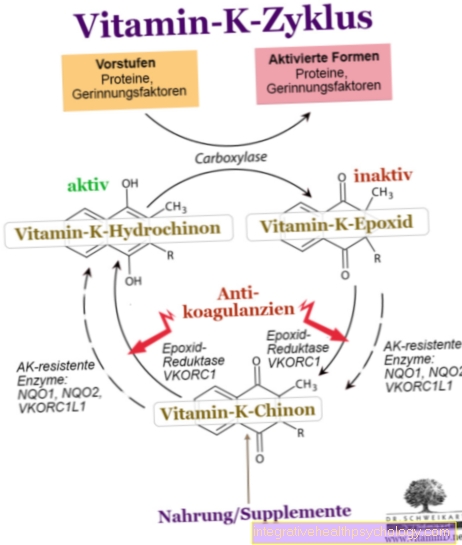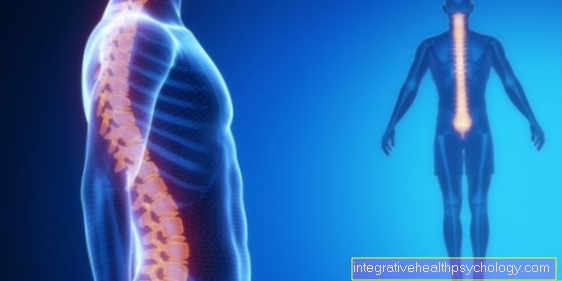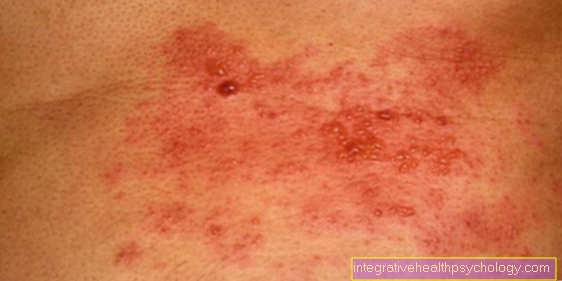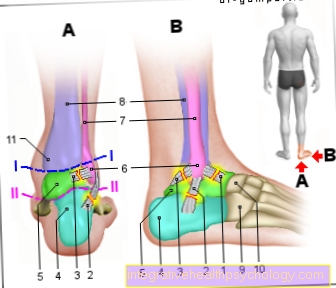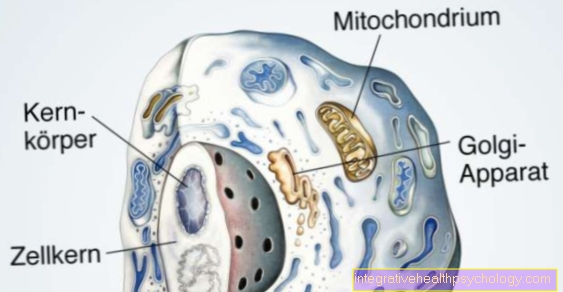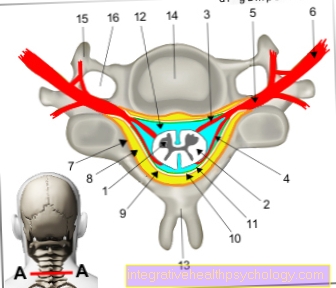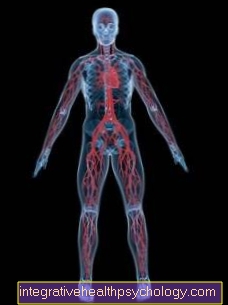Causes of Dupuytren's Disease
What is Dupuytren's disease?
In Dupuytren's disease, there is a change in the connective tissue tendon plate on the palm of the hand (on the so-called palmar aponeurosis) in the form of increased collagen formation.
Due to the restructuring of the tissue, which can also be felt as a hardened nodule-like change on the palm of the hand, the mobility of the fingers is reduced in those affected. More precisely, the ability to stretch, particularly of the little finger, is restricted due to a flexion contracture.
Medicine speaks of an idiopathic genesis of Dupuytren's disease, since the exact cause has not been conclusively clarified and only associations or comorbidities with other diseases are known.
The facts are clearer that Dupuytren's disease occurs mainly in the white population and that men are more frequently affected than women. The typical age of onset is 40 to 60 years.
The general information on the clinical picture of Dupuytren's disease is also important. You can find these in the following article: Dupuytren's disease

General causes of Dupuytren's disease
The exact causes that lead to Dupuytren's disease have not yet been conclusively clarified.
Only the genetic components, i.e. a familial cluster, are considered to be relatively certain.
For all other risk factors or diseases associated with Dupuytren's disease, it has not been proven with complete certainty that they have an influence on the development. The risk factors include, on the one hand, luxury foods such as alcohol and nicotine, on the other hand, open injuries to the palm of the hand or fractures of the hand and forearm bones. Repeated stress and mechanical stress can also provoke Dupuytren's disease.
The male sex is also seen as a predisposing factor: the ratio is approx. 5: 1.
Organic diseases that affect the liver and pancreas also play a role. Accordingly, Dupuytren's disease is associated with diabetes mellitus and liver cirrhosis.
Other illnesses include epilepsy, hyperlipidemia and an existing HIV infection. According to the current state of knowledge, it is also assumed that Dupuytren's disease occurs more frequently in combination with diseases from the rheumatic group of forms or autoimmune diseases.
An important differential diagnosis is the so-called kamptodakytlie. This is a congenital change in the little finger: namely a flexion contracture as in Dupuytren's disease. In rare cases, the ring finger can also be affected. Kamptodakytlie, on the other hand, has existed since birth and is therefore genetically pre-terminated. Although there is also a genetic component in Dupuytren's disease, many other risk factors or organic diseases influence the development and severity of Dupuytren's contracture.
In addition to Dupuytren's disease, other hand diseases can also be present. This article will give you an overview of these: Hand diseases
Heredity as a cause of Dupuytren's disease
In the explanation of the cause of Dupuytren's disease, a genetic component is also discussed, as an increase in the development of the disease within the family could be observed.
According to current scientific knowledge, the so-called "WNT signal path" should play a role here. This is a sequence of reactions in the body that are relevant to both carcinogenesis and embryonic development.
Put simply, the changed signal path leads, among other things, to a restructuring of the connective tissue cells of the palmar aponeurosis in the palm of the hand, resulting in increased collagen and myofibroblast formation. This ultimately leads to reduced mobility of the fingers and the development of the flexion contracture, which is responsible for the typical appearance of Dupuytren's disease.
Liver cirrhosis as the cause of Dupuytren's disease
Liver cirrhosis can manifest itself on the one hand with unspecific general symptoms such as fatigue, itching, feeling of pressure in the upper abdomen, an increase in abdominal circumference or jaundice (jaundice).
On the other hand, so-called liver skin signs can develop on several parts of the body. These manifest themselves on the head, trunk and extremities. At the latter location, a Dupuytren's contracture can develop in the context of liver cirrhosis.
A precise explanation of why cirrhosis of the liver leads to Dupuytren's disease has not been finally clarified. In the case of a Dupuytren's contracture, however, one should always clarify or rule out a disease of the liver.
Dupuytren's disease can also indicate liver cirrhosis and thus appear as a symptom of liver disease. In order to be able to recognize cirrhosis of the liver as early as possible, you should also deal with the following: Symptoms of cirrhosis of the liver
Diabetes as a cause of Dupuytren's disease
Diabetes is one of the diseases that occur in connection with Dupuytren's disease. Nevertheless, most diabetes patients do not develop Dupuytren's disease. On average, only about 20% of diabetics suffer from a Dupuytren contracture, and it makes no difference whether it is type 1 or type 2 diabetes.
In addition, the extent of the contracture is lower when diabetes is present than in non-diabetics. Compared to non-diabetics, Dupuytren's disease manifests itself at a younger age and occurs roughly equally in both sexes, whereas the male sex is otherwise more frequently affected.
The exact relationship or the influence that the two diseases have on each other has not yet been clarified, but represents a current research topic. The development of Dupuytren's disease is often viewed as a warning signal for the occurrence of diabetes.
The consequences of diabetes are serious. In addition to the Dupuytren's contracture, the body exhibits numerous other symptoms. You can find these symptoms in detail at:
- Symptoms of Diabetes Mellitus
- How do I recognize diabetes?
Epilepsy as a cause of Dupuytren's disease
Like diabetes, epilepsy is one of the associated diseases of Dupuytren's disease. The correlation between the two diseases was first recognized in the 1940s and has been part of research ever since. The rate of new cases of a Dupuytren contracture in epileptics can be up to 57%.
There is no connection with regard to the respective severity. It also makes no difference what type of epilepsy it is. An influence on the development of a Dupuytren's contracture by drugs in epilepsy therapy such as anticonvulsants is also being discussed.
In addition, it is known that epileptics often develop ankle pads or fibrotic nodules under the foot, i.e. on the plantar fascia. These are special forms of Dupuytren's disease, so that a general tendency towards restructuring of connective tissue towards fibrotic tissue is suspected in the context of epilepsy.
Everything related to the subject of "epilepsy" is listed below:
- Epilepsy - What to watch out for
- Drugs for epilepsy - effects and side effects
Alcohol as the cause of Dupuytren's disease
A precise explanation for the influence of alcohol consumption on the development of Dupuytren's disease has not been clarified. There are several mechanisms that are discussed.
Among other things, it is assumed that the consumption of alcohol on the hands both changes the blood circulation and causes damage to fat and connective tissue. In addition, cirrhosis of the liver can develop through long-term, heavy consumption of alcohol, which is known to be associated with Dupuytren's disease. In addition, it is assumed that in patients with cirrhosis of the liver, the development of the Dupuytren's contracture is mostly due to alcohol consumption.
In general, alcohol consumption alone or in the context of liver cirrhosis increases the risk of developing Dupuytren's disease.
For more information, read accompanying this section: Consequences of alcohol
Hyperlipidemia as a cause of Dupuytren's disease
Hyperlipidemia is understood to mean the presence of increased blood fat levels, including triglycerides and cholesterol. A distinction can be made between different types of hyperlipidemia, depending on the distribution of the increased fat components.
The association between hyperlipidemia and Dupuytren's disease is related to the diseases that cause hyperlipidemia. Both diabetes and increased alcohol consumption lead to an increase in blood lipid levels. Since these two factors in themselves are considered risk factors or associated diseases with regard to the development of a Dupuytren's contracture, hyperlipidemia is also a cause of Dupuytren's disease.
In order to be able to fall back on the cause of hyperlipidemia in relation to the clinical picture of Dupuytren's disease, it is important to first deal with the causes of hyperlipidemia. Find out more about this at: Hyperlipidemia - that's what's behind it
Recommendation from the editor
Other important articles related to Dupuytren's disease are listed:
- Dupuytren's disease
- Surgery for Dupuytren's disease
- Therapy of Dupuytren's disease
- Exercises for Dupuytren's disease
- Joint swelling on the finger








